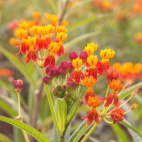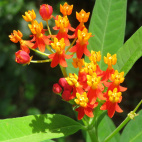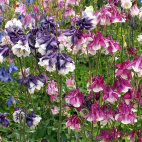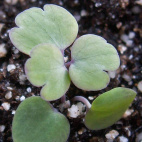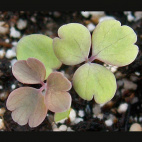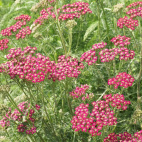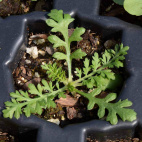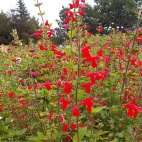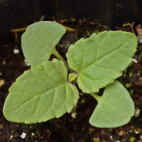Color
Availability
USDA Zone
Region
Type
Duration
Season
Germination
Soil
Sunlight
Height
Use
Narrow Your Search
Color
Availability
USDA Zone
Region
Type
Duration
Season
Germination
Soil
Sunlight
Height
Use
Wildflower Seeds - Mountain Region
The Mountain Region is a diverse area of the Western US that includes the Rockies, Olympics, Sierras, and a host of other mountain ranges. These areas are higher in elevation than the surrounding areas, and so face more extremes in temperature as well as moisture. Generally, the western sides of the mountains are greener than the eastern sides because most of the weather patterns move from west to east. Since the area described here is so vast and variable, you may have to experiment a bit to see exactly what will grow in your micro climate. We cannot tell you exactly what mountain wildflower seeds will grow in your garden because it depends so much on your exact location - a garden a few miles from you may have a totally different climate, rainfall, soils, and daylight. The best thing is to experiment and buy wildflower seeds online, or ask local gardeners or greenhouses if you want localized gardening information.
-
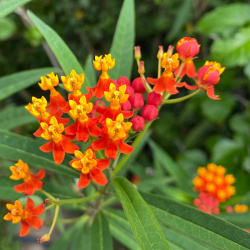 On Sale!
Blood Flower Seeds
Asclepias curassavica
Also known as tropical milkweed, these brilliant red and yellow blossoms explode with color in their first growing season. Although this species is a member of the Milkweed family, recent studies have shown that it actually may be detrimental to the Monarch Butterfly, especially in southern climates where the plants can survive year-round. The plants can harbor diseases that harm the Monarch, and disrupt their normal migratory patterns. Please only use this plant as an annual, and do not let it winter over!Quick Viewx
On Sale!
Blood Flower Seeds
Asclepias curassavica
Also known as tropical milkweed, these brilliant red and yellow blossoms explode with color in their first growing season. Although this species is a member of the Milkweed family, recent studies have shown that it actually may be detrimental to the Monarch Butterfly, especially in southern climates where the plants can survive year-round. The plants can harbor diseases that harm the Monarch, and disrupt their normal migratory patterns. Please only use this plant as an annual, and do not let it winter over!Quick ViewxBlood Flower Seeds
Asclepias curassavica
Also known as tropical milkweed, these brilliant red and yellow blossoms explode with color in their first growing season. Although this species is a member of the Milkweed family, recent studies have shown that it actually may be detrimental to the Monarch Butterfly, especially in southern climates where the plants can survive year-round. The plants can harbor diseases that harm the Monarch, and disrupt their normal migratory patterns. Please only use this plant as an annual, and do not let it winter over!
$3.48 Pkt - $14.49 / Oz -
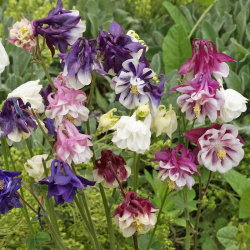 Dwarf Columbine Seed Mix
Aquilegia vulgaris
These delicate, nodding blossoms grow wild throughout much of northern Europe. This 16" dwarf variety produces a lovely mix of colors that will brighten any space!Quick View$3.48 Pkt - $12.65 / Oz
Dwarf Columbine Seed Mix
Aquilegia vulgaris
These delicate, nodding blossoms grow wild throughout much of northern Europe. This 16" dwarf variety produces a lovely mix of colors that will brighten any space!Quick View$3.48 Pkt - $12.65 / Oz -
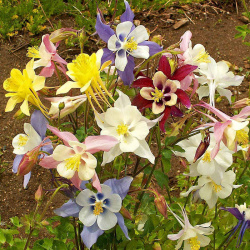 McKana Giants Columbine Seed Mix
Aquilegia caerulea
Developed explicitly for its large colorful blooms, this AAS Award winner first became available in the 1950s. A striking choice for any gardener who loves the distinctive columbine shaped flowers.Quick View$3.48 Pkt - $20.16 / Oz
McKana Giants Columbine Seed Mix
Aquilegia caerulea
Developed explicitly for its large colorful blooms, this AAS Award winner first became available in the 1950s. A striking choice for any gardener who loves the distinctive columbine shaped flowers.Quick View$3.48 Pkt - $20.16 / Oz -
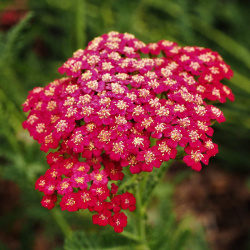 Red Yarrow Seeds
Achillea millefolium rubra
Fragrant foliage and cheerful, long-lasting flowers make this an enduring favorite. Try this variety if you want to add color to a dry area. Yarrow is also valued for its herbal properties.Quick View$3.48 Pkt - $18.77 / Oz
Red Yarrow Seeds
Achillea millefolium rubra
Fragrant foliage and cheerful, long-lasting flowers make this an enduring favorite. Try this variety if you want to add color to a dry area. Yarrow is also valued for its herbal properties.Quick View$3.48 Pkt - $18.77 / Oz -
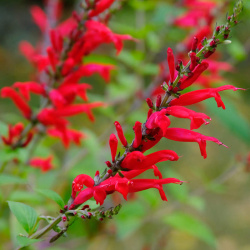 Scarlet Sage Seeds
Salvia coccinea
Ablaze with color, these crimson spikes come from the southern US, but can be grown as an annual in most areas. The hummingbirds love these red tubular flowers, and will be zinging through your garden with delight!Quick View$3.25 Pkt - $11.03 / Oz
Scarlet Sage Seeds
Salvia coccinea
Ablaze with color, these crimson spikes come from the southern US, but can be grown as an annual in most areas. The hummingbirds love these red tubular flowers, and will be zinging through your garden with delight!Quick View$3.25 Pkt - $11.03 / Oz
The Mountain Region is a diverse area of the Western US that includes the Rockies, Olympics, Sierras, and a host of other mountain ranges. These areas are higher in elevation than the surrounding areas, and so face more extremes in temperature as well as moisture. Generally, the western sides of the mountains are greener than the eastern sides because most of the weather patterns move from west to east. Since the area described here is so vast and variable, you may have to experiment a bit to see exactly what will grow in your micro climate. We cannot tell you exactly what mountain wildflower seeds will grow in your garden because it depends so much on your exact location - a garden a few miles from you may have a totally different climate, rainfall, soils, and daylight. The best thing is to experiment and buy wildflower seeds online, or ask local gardeners or greenhouses if you want localized gardening information.










